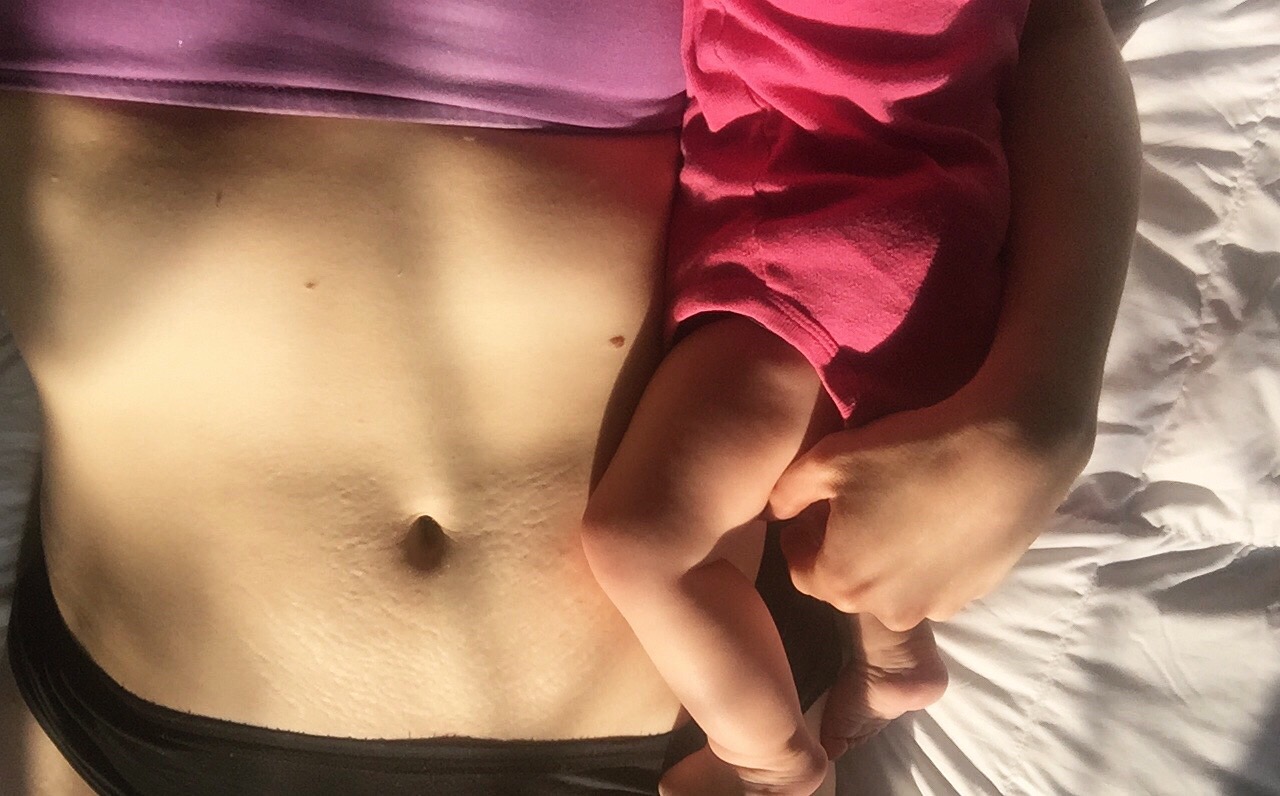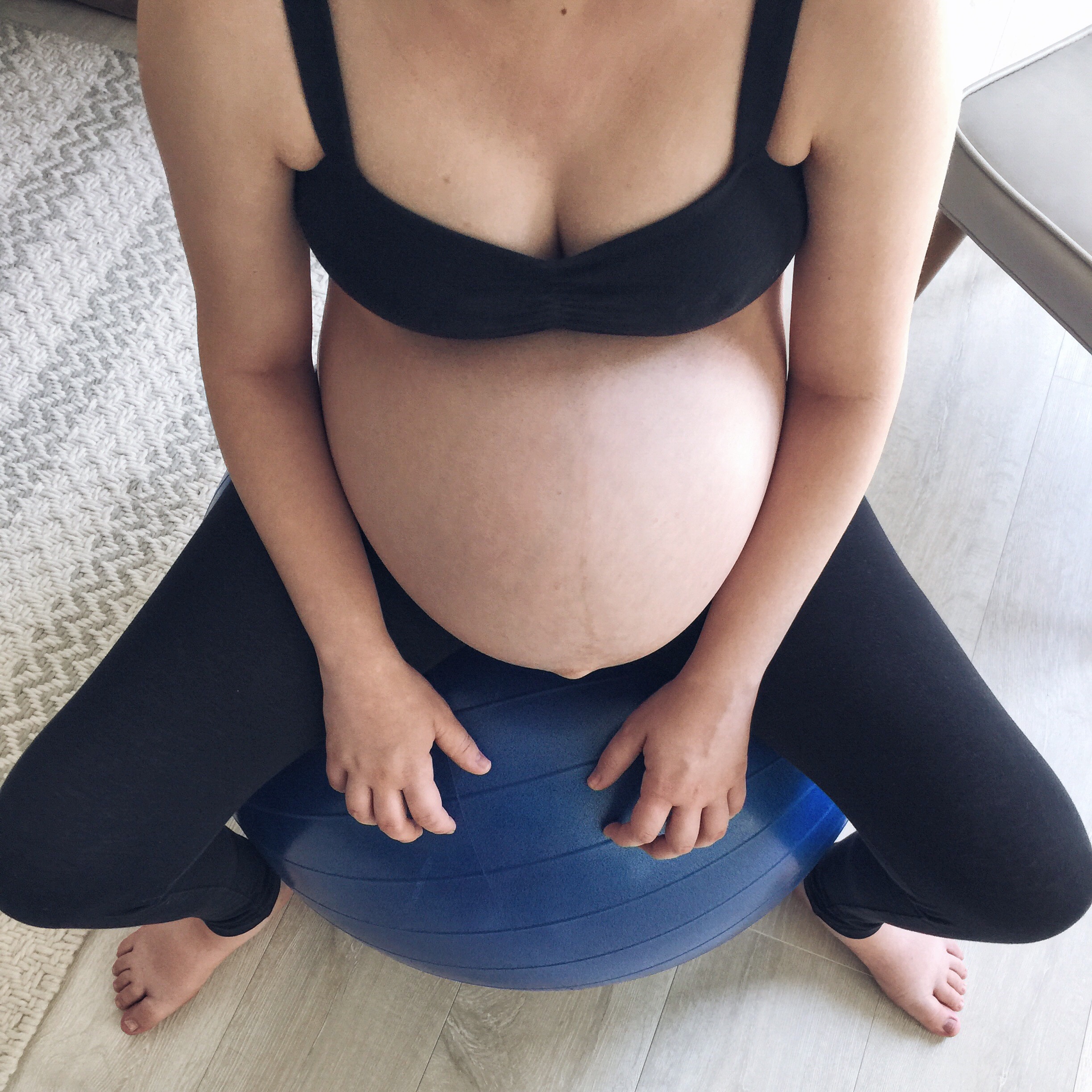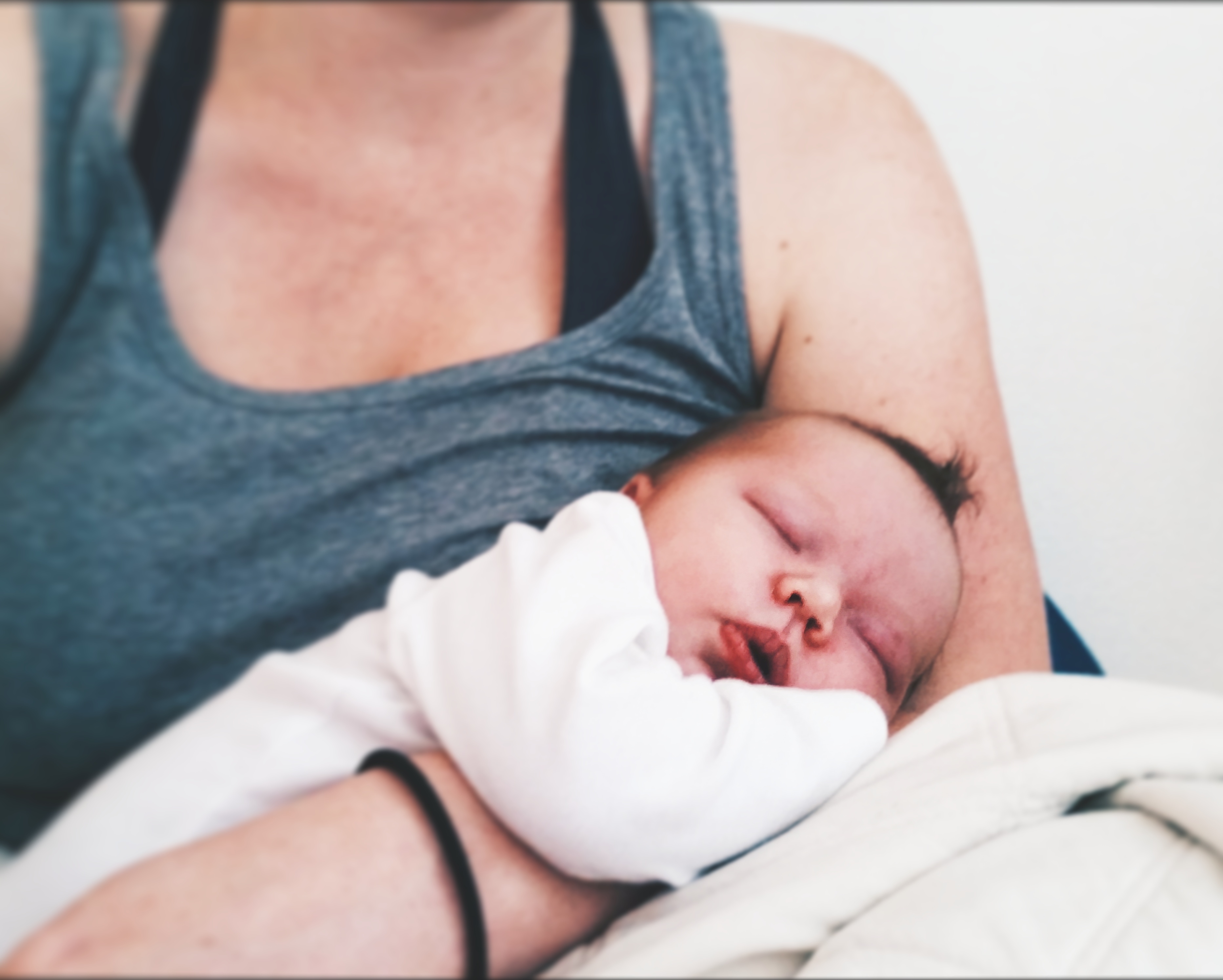
Jessica Alba famously recovered her figure by using several corsets to squeeze her hips and belly back into their pre-baby position years ago. For centuries, women before her, in various cultures all over the world, have tried similar belly binding or postpartum wrapping techniques to help the recovery process after childbirth. But does it really work? After my firstborn left me with a permanent pregnancy pooch, I decided I had to give it a try.
True story: My husband and I decided to have a second baby primarily because I wanted to try belly binding.
A few months after I had my first son, the boss at our favorite pho restaurant asked me why I didn’t bind my belly (which somehow had missed the memo that we were no longer five months pregnant). Now, before you go up in flames about boundaries, you should know that we are close! So close they even delivered pho to the delivery room.
The truth is that I had never thought about belly binding. My mother, a ballerina in her younger days, bounced back from all three children in a flash. Since I was an avid cyclist and mountain climber, I assumed my body would do the same. Only it didn’t, and after months of diastasis recti (DR) rehab, I still looked pregnant.
So I decided to do the reasonable thing: I had another baby so I could fix my stomach without surgery.
How does belly binding work?

The hormone relaxin increases significantly during pregnancy to relax the intrauterine ligaments and cervix and allow our bodies to stretch and loosen things up for childbirth. The thinking goes: Belly binding and hip binding takes advantage of this softened state and pushes the hips and the separated abdomen back together as the body firms up. Specialists like Gentle Beginnings in the Netherlands recommend belly binding 24/7 for two months starting on five days postpartum, or starting at six weeks postpartum for C-sections, though time frames can vary. Wear the bind as long as it’s comfortable.
Remember, belly binding is mainly touted to help prevent DR, when the large abdominal muscles separate and keep moms looking pregnant even when they are not. It can’t magically make your fat disappear (to my disappointment) and is not a substitute for healthy eating and exercise.
What kind of bind is best?

Before I even got pregnant, I purchased several belly binding items: a bengkung (the traditional knotted Malaysian belly wrap), several corsets, and Velcro postpartum wraps.
At five days postpartum, I started by layering a few of these hook-and-loop stomach wraps (always wear a tank underneath to prevent chafing) over my abdomen and hips, making sure to push the side of my stomach together, rather than pulling them apart or pushing my stomach flat. This is supposed to reposition the muscles that have been stretched apart by pregnancy.
I chose this method first because I was too tired to deal with the bengkung, which had to be rebound frequently as it slipped up my hips and into my waist. The Velcro wraps were easy to use and reposition, but the wraps did wear out quickly, causing the boning to jut out and the material to scrunch up around my waist. (There are options without boning, like these waist trimmers, but they tend to bunch up when you bend over, which is pretty much all that moms do.)
A friend had recommended a corset, but unfortunately the one I purchased didn’t have a bottom opening. Between a weakened pelvic floor and my extra pounds, I just couldn’t get it off in time when I had to go pee.
A few short days after wrapping my stomach, the compliments started rolling in. My stomach was flatter than it had been in years. Success! Or so I thought …
Can wrapping be harmful?

OK, to be fair, it was probably giving birth to a baby whose is in the 99th percentile with one push (no epidural was available and I was SO DONE with labor) that caused my weakened pelvic floor, but binding prevented it from healing. Every time I put on the wrap, my postpartum bleeding would increase and it felt like something was pushing through my vagina.
I consulted with my OB, my midwife, and my Chinese lactation consultant (who trained as a maternity nurse back home, where belly binding is common), and it turns out I had a pelvic organ prolapse, wherein pelvic organs (like the bladder) get pushed against the wall of the vagina because the pelvic muscle is too weak. The bind squeezed all of my organs in, which pushed my bladder down, causing the discomfort. The only solution: Stop binding and start Kegeling.
Crushed, I watched as my stomach began to spread again. I started doing Kegels and DR exercises for a few weeks. Once my pelvic floor was strong enough, I slowly began binding again.
Does binding work later?

You can belly bind later in your postpartum recovery, but sadly, it’s not as effective. Once I got the all-clear from my OB, I began binding again and did see good results, but not the amazing results that I saw in those first days.
Two months postpartum, I started wearing my corset and noticed that my stomach was getting flatter, though more like “just starting to show” flatter than “baby? what baby?” flatter.
Curious to know if this was normal, I checked with the women in my Chinese moms WeChat group. I got a resounding yes. Some lamented having been too lazy, while others proudly showed off their gorgeous flat tummies and encouraged others to bind as soon as humanly possible. Others said that while their core felt stronger, they were still carrying their baby weight, so only time would tell.
What else should you know?

I was convinced I had blood clots when I couldn’t breathe, but it turned out to be a combination of binding, anxiety, and allergies. I stopped binding at night, I used my Neti pot and the situation resolved.
When belly wrapping, you want to pay close attention to how you feel. The postpartum weeks are tough on the body; conditions like pre-eclampsia, blood clots, and circulation problems can appear for months after birth. If you’re at high risk for any of those conditions and it doesn’t feel right, stop and see your doctor. Pay attention to your breathing, watch out for dizziness and report any headaches. The key with belly binding is it should never be painful.
*Disclaimer: The advice on Mom.com is not a substitute for consultation with a medical professional or treatment for a specific condition. You should not use this information to diagnose or treat a health problem without consulting a qualified professional. Please contact your health-care provider with questions and concerns.
